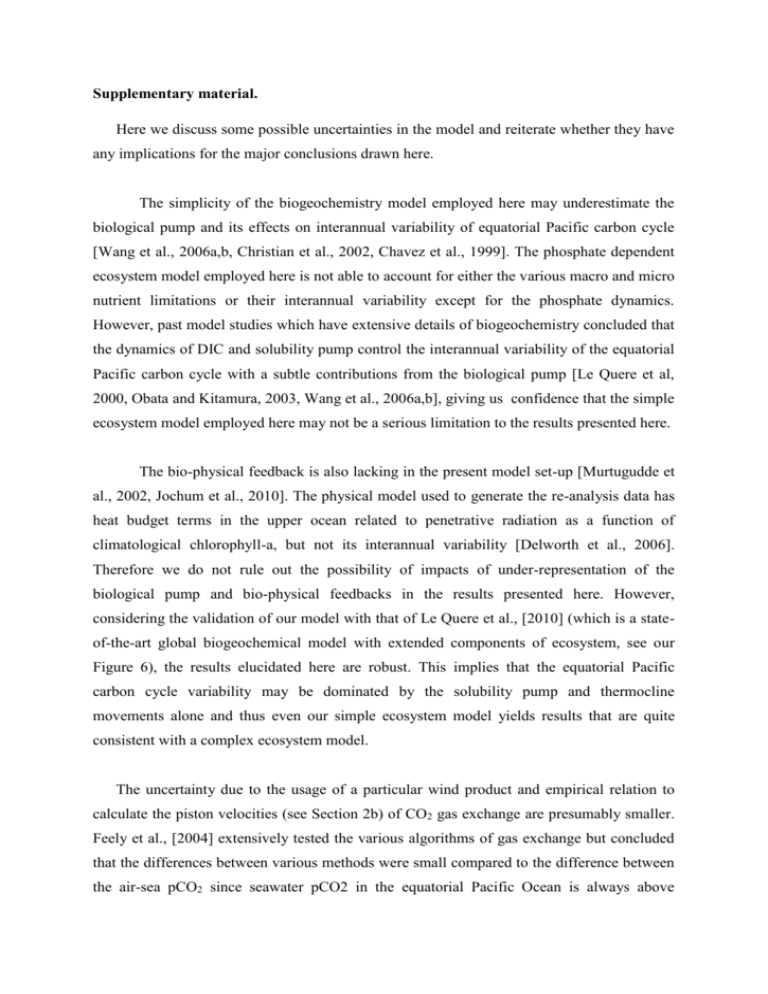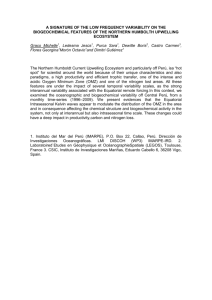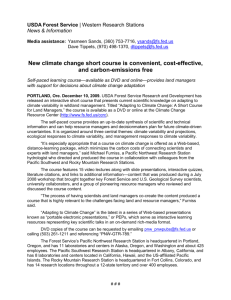jgrc21034-sup-0002
advertisement

Supplementary material. Here we discuss some possible uncertainties in the model and reiterate whether they have any implications for the major conclusions drawn here. The simplicity of the biogeochemistry model employed here may underestimate the biological pump and its effects on interannual variability of equatorial Pacific carbon cycle [Wang et al., 2006a,b, Christian et al., 2002, Chavez et al., 1999]. The phosphate dependent ecosystem model employed here is not able to account for either the various macro and micro nutrient limitations or their interannual variability except for the phosphate dynamics. However, past model studies which have extensive details of biogeochemistry concluded that the dynamics of DIC and solubility pump control the interannual variability of the equatorial Pacific carbon cycle with a subtle contributions from the biological pump [Le Quere et al, 2000, Obata and Kitamura, 2003, Wang et al., 2006a,b], giving us confidence that the simple ecosystem model employed here may not be a serious limitation to the results presented here. The bio-physical feedback is also lacking in the present model set-up [Murtugudde et al., 2002, Jochum et al., 2010]. The physical model used to generate the re-analysis data has heat budget terms in the upper ocean related to penetrative radiation as a function of climatological chlorophyll-a, but not its interannual variability [Delworth et al., 2006]. Therefore we do not rule out the possibility of impacts of under-representation of the biological pump and bio-physical feedbacks in the results presented here. However, considering the validation of our model with that of Le Quere et al., [2010] (which is a stateof-the-art global biogeochemical model with extended components of ecosystem, see our Figure 6), the results elucidated here are robust. This implies that the equatorial Pacific carbon cycle variability may be dominated by the solubility pump and thermocline movements alone and thus even our simple ecosystem model yields results that are quite consistent with a complex ecosystem model. The uncertainty due to the usage of a particular wind product and empirical relation to calculate the piston velocities (see Section 2b) of CO2 gas exchange are presumably smaller. Feely et al., [2004] extensively tested the various algorithms of gas exchange but concluded that the differences between various methods were small compared to the difference between the air-sea pCO2 since seawater pCO2 in the equatorial Pacific Ocean is always above saturation levels. Considering the amplitude of anomalies discussed in this study, the uncertainty arising from the nature of wind product used and/or gas-exchange relations used are rather small.











